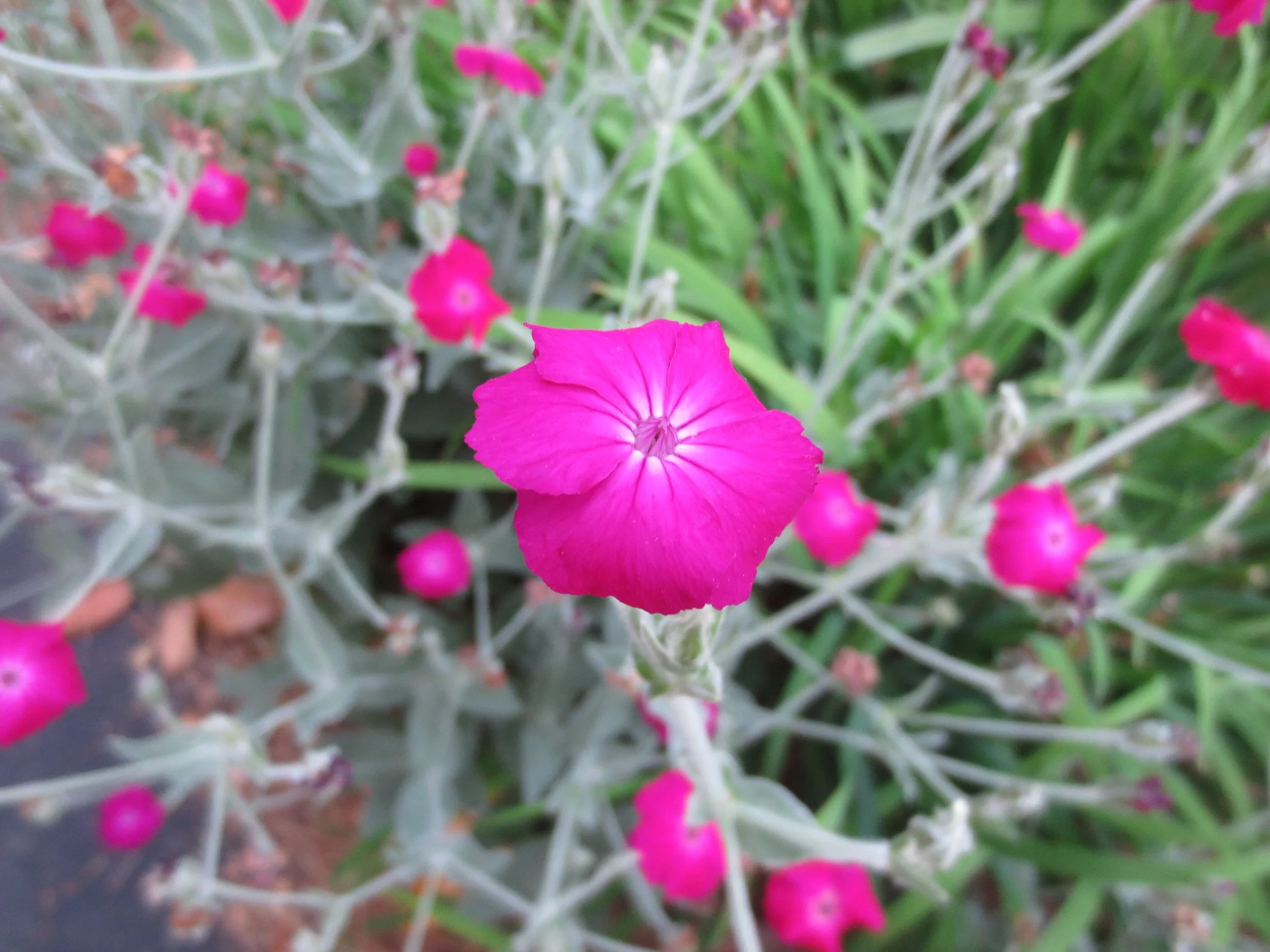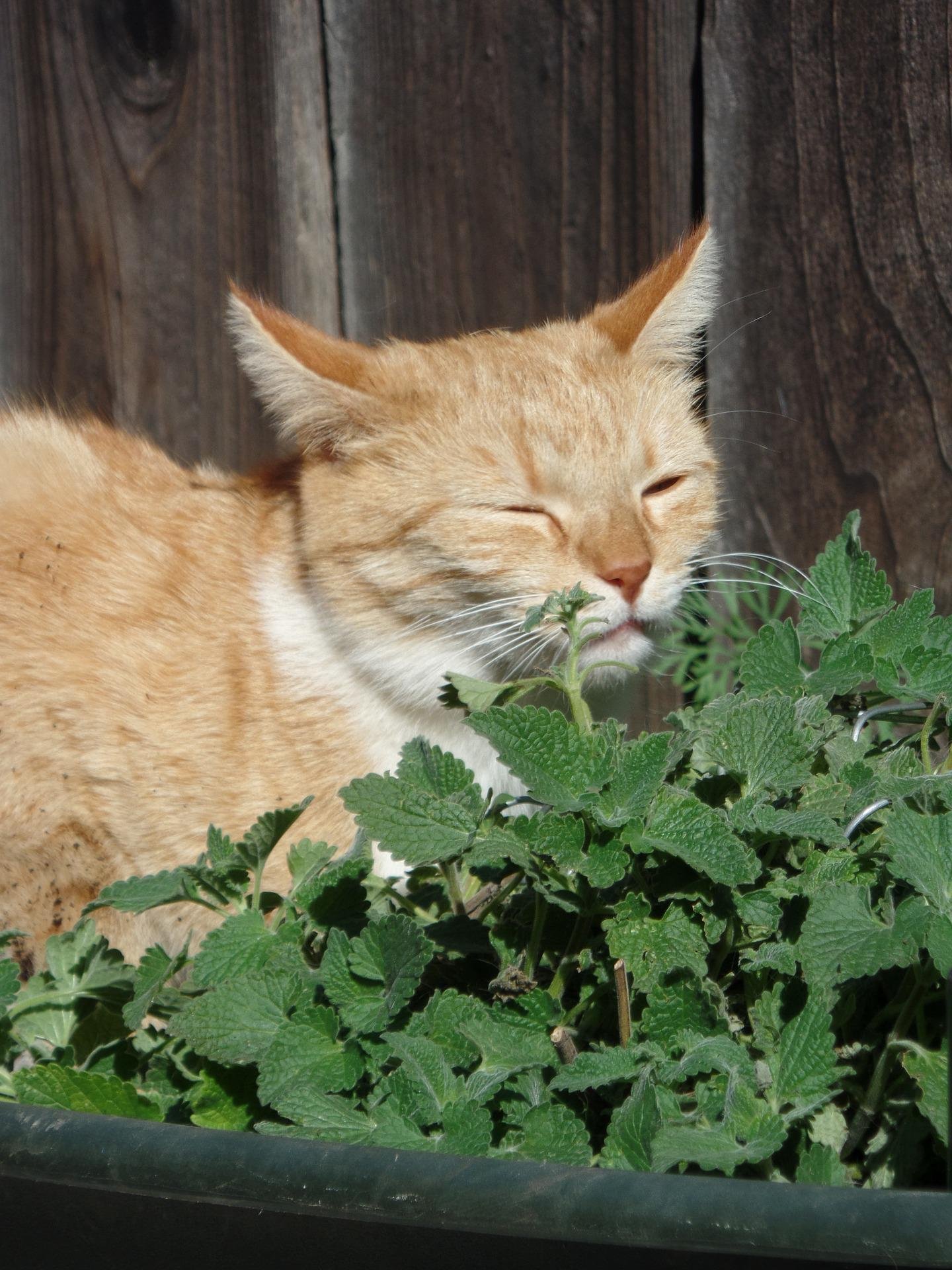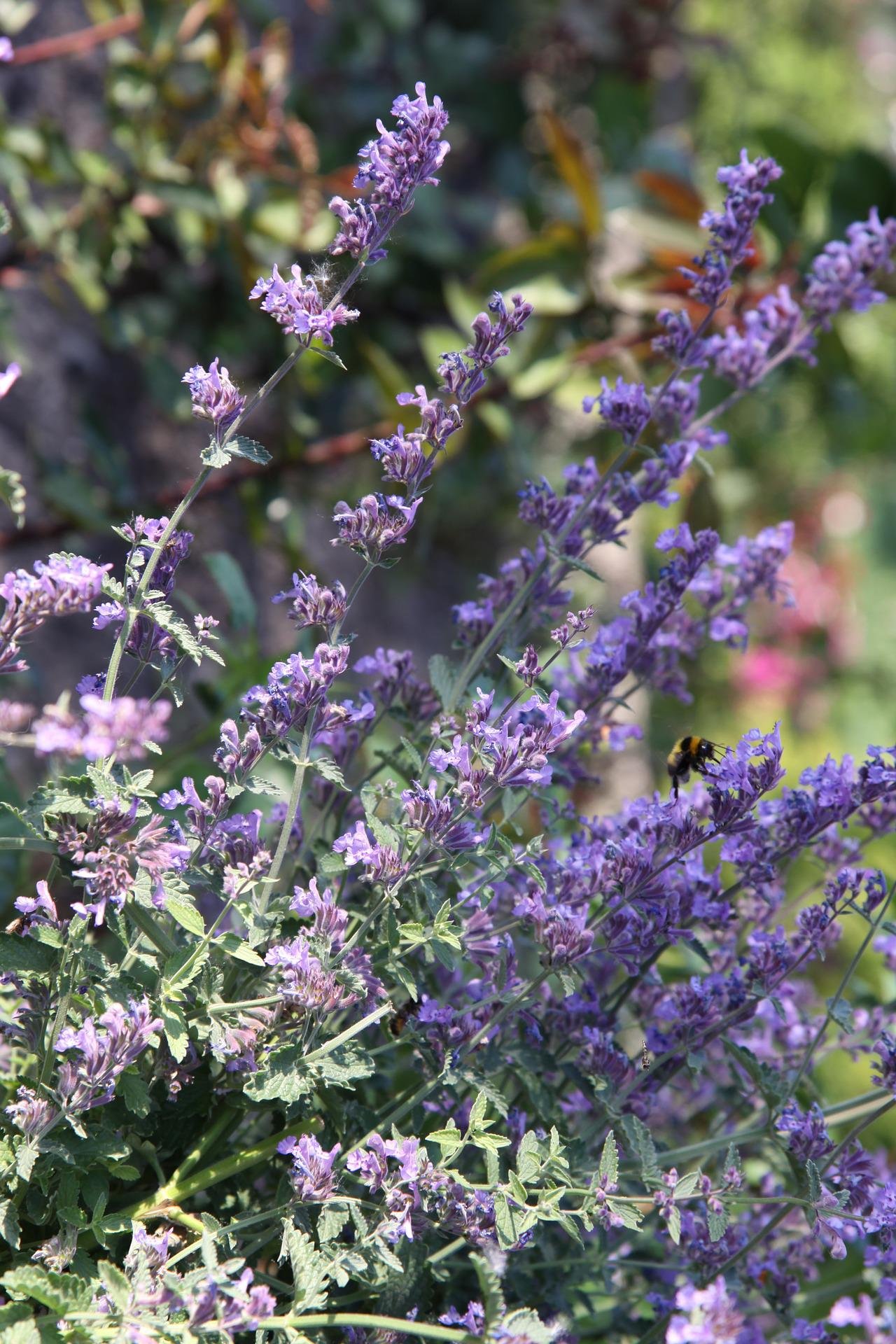Some of my favorite garden plants were acquired through happenstance. At a garden club plant swap last spring, I received a small Sea Holly. I recalled the Latin name as being Eryngium planum, pronounced er-RIN-jee-um PLAY-num, but didn’t know much about it then. It is a perennial, hardy in zones 5-9. I planted it in full sun and inhospitable soil that is excavated fill dirt. It made itself at home in the Snoddy garden, and this year it is a 36-inch tall star. The name would make one think it is spiny, and the flowers have thistle-like heads that reinforce that idea, but they are not painfully sharp. The stems have prickles. The ice-blue flowers provide a nice contrast to surrounding, more traditional blossoms.
Once established, Sea Holly is drought tolerant and will not tolerate wet soils. It will flourish in any well-drained soil and almost any acidity level. Give it full sun for the most intense flower color. Deer and rabbits leave the plants alone, and pollinators flock to them.
Sea Holly has a long bloom season. You can extend it still further by deadheading, but I don’t because I want it to reseed. A grouping of several plants would make an impressive appearance. I have already separated one offset from the mother plant, and it is showing appreciation by rapid growth. The blue color looks great paired with pale yellow flowers such as Lantana ‘Chapel Hill’. Several cultivars have deeper blue flowers, one cultivar is a dwarf reaching only a foot tall, and one has greenish white flowers.
There are a few drawbacks. Rich soil produces tall, weak stems that flop over. Prevent this by locating them in an area with dry, lean soil where other perennials won’t perform well. Cut stems back at season’s end to produce a stronger, neater plant the following year. Sea Holly is sometimes affected by aphids or slugs, although I haven’t experienced those problems in my own garden. The main concern is… well, allow me to quote the NC State Extension Plant Toolbox: “The flowers smell faintly of horse manure.” Let me emphasize the odor is slight. Keep your nose a few feet away, and you will not notice.
This Sea Holly is in its second year.





















